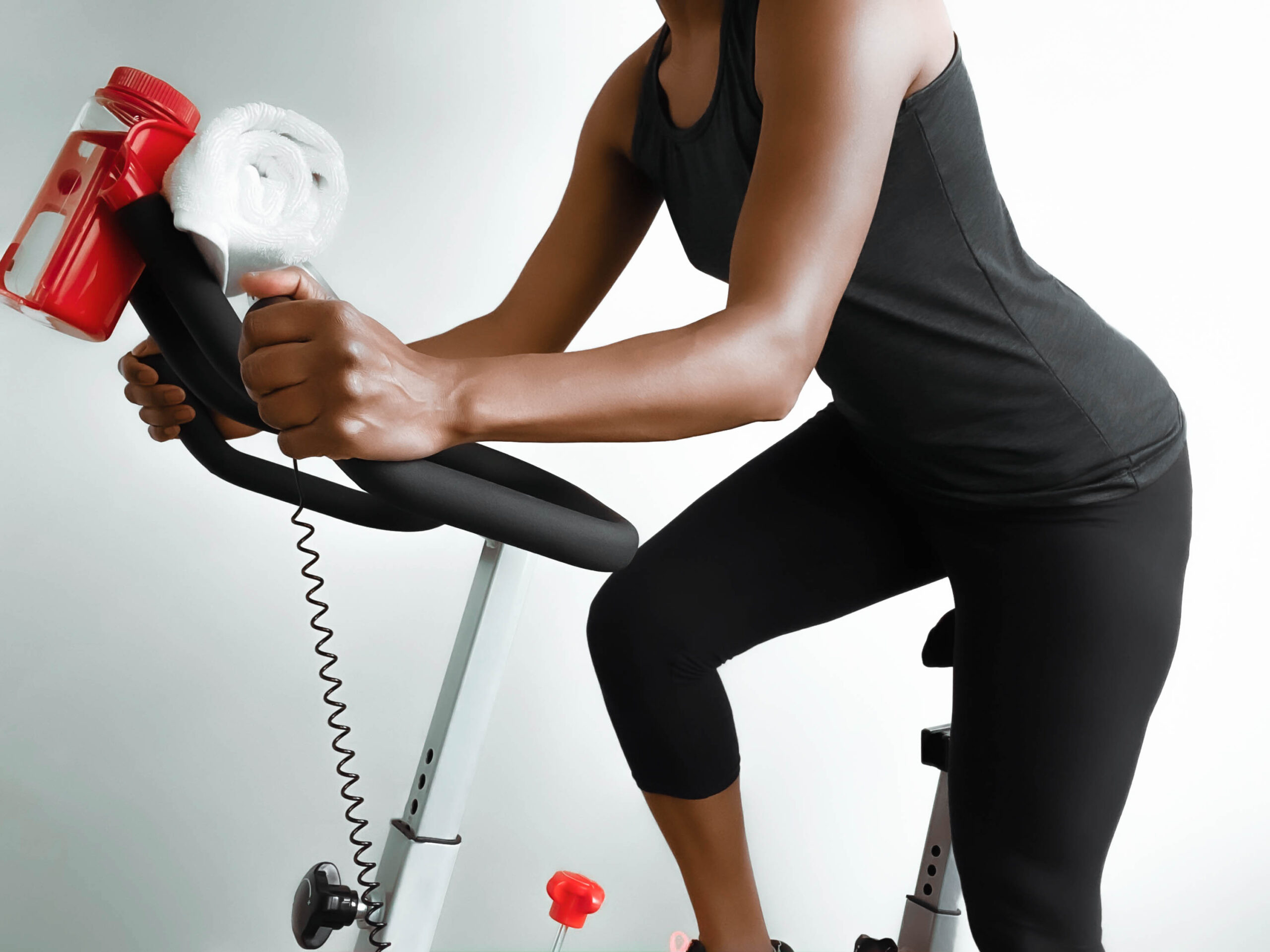When deciding between an exercise bike and walking, it’s important to weigh key factors like cardiovascular fitness, calorie-burning potential, accessibility, and long-term sustainability. Both are excellent forms of cardio, but depending on your goals and physical condition, one may suit you better than the other.
In this article, we’ll explore the benefits of each workout method and help you choose the most effective path for your health journey. Whether you’re looking for the best indoor cardio for bad knees or simply want to know which burns more fat, keep reading to make an informed decision.
The Benefits of an Exercise Bike
An exercise bike provides a controlled and efficient cardio workout that’s gentle on the joints—making it ideal for individuals recovering from injury or living with joint discomfort. It offers an indoor training option unaffected by weather, and with adjustable resistance levels, you can tailor your workout to fit your fitness level.
Key Benefits Include:
-
Low-impact workouts for joint health
-
Customizable intensity for fat burning and endurance
-
Trackable metrics like time, speed, distance, and calories
-
Safe indoor environment, perfect for year-round use
For those seeking stationary bike benefits for seniors, the seated, low-impact design helps reduce fall risk while boosting circulation and cardiovascular health.
Comparing Exercise Bike to Walking: Pros and Cons
🔹 Joint Health and Impact
Both biking and walking are considered low-impact, but cycling is gentler on the knees and hips. If you’re searching for the best indoor cardio for bad knees, the stationary bike comes out ahead.
🔹 Calorie Burn and Fat Loss
Intensity matters. If you ride at a moderate to high pace, biking tends to burn more calories per minute than walking. For example, walking vs biking calories shows that a 30-minute bike ride at moderate intensity may burn 200–300 calories, while walking might burn 150–200.
Wondering is biking better than walking for fat loss? Yes—especially when resistance and speed are increased consistently.
🔹 Accessibility and Convenience
Walking is one of the most accessible forms of exercise. You don’t need any equipment, and you can do it almost anywhere. That said, cycling indoors removes barriers like bad weather, poor air quality, or safety concerns.
Factors to Consider Before Choosing
When it comes to choosing between biking and walking, think about these key considerations:
✅ Your Fitness Goals
-
Want to burn more calories in less time? Go with biking.
-
Looking to stay active with a low-effort routine? Walking might be better.
✅ Physical Condition and Injury History
-
If you suffer from joint pain or are in rehab, biking is often the safer choice.
-
Walking is a weight-bearing exercise, which may help improve bone density over time.
✅ Time and Schedule
An exercise bike workout can be more efficient if you have limited time and want higher intensity. Walking, on the other hand, is easier to fit into daily life and doesn’t require planning or equipment.
Which Burns More Calories: Walking or Biking?
If your goal is fat loss, consider the calorie expenditure of each:
| Activity | Duration | Calories Burned (avg) |
|---|---|---|
| Walking (3.5 mph) | 30 mins | 140–180 |
| Stationary Biking | 30 mins | 200–350 |
While walking vs biking calories can vary based on speed, incline, or resistance, biking tends to have the edge for higher calorie burn—especially at moderate to intense levels.

Photo Credit: www.healthline.com
Why You Might Prefer Walking
Despite biking’s calorie-burning power, walking has its own strengths:
-
Natural movement requiring no special equipment
-
Easier on the wallet—no need to buy or maintain a bike
-
Mental health benefits of being outdoors
-
A great option for people of all fitness levels
It’s also easier to stick to for beginners or those easing into a new routine.
Which One Should You Choose?
It comes down to your personal goals and lifestyle. Here’s a quick guide:
| Goal | Recommended Activity |
|---|---|
| Low-impact cardio | Stationary bike |
| Outdoor enjoyment | Walking |
| Better for weight loss | Biking (with intensity) |
| Simplicity and accessibility | Walking |
| Joint support or rehab | Exercise bike |
Final Thoughts
Both walking and using an exercise bike offer excellent cardiovascular benefits and support overall health. The best choice is the one you enjoy and can maintain consistently.
-
If you’re short on time and want a more efficient fat-burning workout, the exercise bike wins.
-
If you prefer a natural, low-effort form of movement that you can do daily, walking is a fantastic option.
Whether you’re searching for stationary bike benefits for seniors, looking for the best indoor cardio for bad knees, or simply debating is biking better than walking for fat loss, the key is to align your choice with your health goals, physical condition, and personal preferences.
Choose what works for you—and stick with it.

